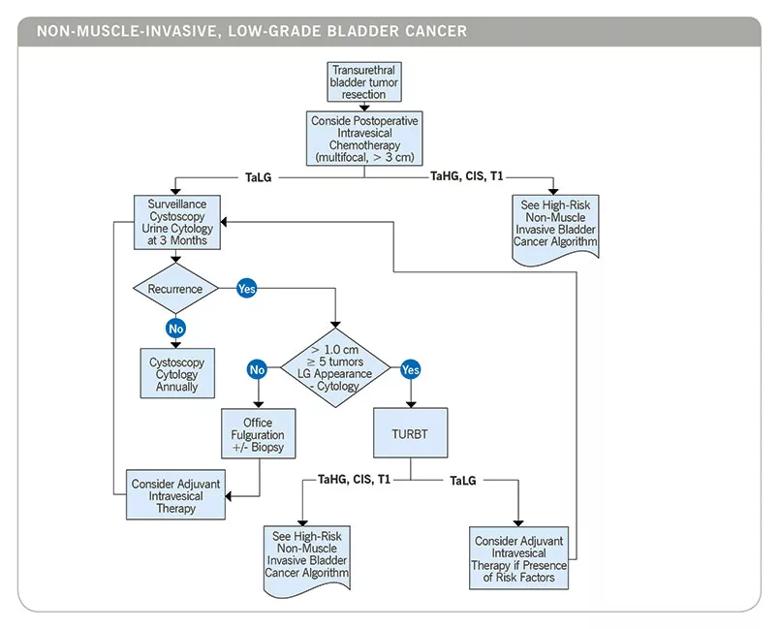Glickman Urological & Kidney Institute has nearly 20 care paths completed or in development

Advertisement
Cleveland Clinic is a non-profit academic medical center. Advertising on our site helps support our mission. We do not endorse non-Cleveland Clinic products or services. Policy
During the last few years, Cleveland Clinic has broken new ground by developing condition-specific care paths within our various clinical institutes. This effort focuses on operationalizing best practices to guide clinical workflow, with an emphasis on quality and value-based care.
Cleveland Clinic care paths start with evidence- and consensus-based “guides,” which are succinct manuals detailing the appropriate steps in patient management for the condition at hand, with supporting rationales. The guides, developed by multidisciplinary teams of Cleveland Clinic experts, are translated into algorithms and workflows for practical application.
The care path initiative is focused on three major areas:
Cleveland Clinic’s Glickman Urological & Kidney Institute has nearly 20 care paths completed or in development.
Two years ago, the Center for Urologic Oncology implemented two of the Urological & Kidney Institute’s first care paths — for bladder cancer and prostate cancer. These care paths have served as excellent models for the care paths that have followed, especially because one (bladder cancer) addresses a condition that is complex to treat, while the other (prostate cancer) is more straightforward. (On the horizon: a care path for localized kidney cancer.)
Advertisement
We took a comprehensive, inclusive approach to creating the care paths. They were developed and vetted in committees of relevant stakeholders, including — but not limited to — urologists, pathologists, radiologists, medical oncologists, radiation oncologists, nutritionists, pharmacists and nurses.
It’s important to note that care paths serve as best practices guidance, but they aren’t concrete or inflexible — we still encourage clinicians to use their professional judgment and experience to guide treatment plans and recommendations.
This was the first care path we implemented. The prostate cancer care path is short and straightforward, since the treatment for prostate cancer is now largely universally standardized. Therefore, this care path focuses on ensuring that clinicians use evidence-based medicine in the context of value-based care. Essentially, it provides guidance on eliminating unnecessary expensive tests in favor of less expensive ones.
The management of patients with invasive bladder cancer requires multidisciplinary care, making it complex and possibly leading to variability in treatment. In developing this care path, we identified the best guidance for multidisciplinary care of individual patients, incorporating not only evidence-based medicine and clinical guidelines, but also our institutional expertise.
The bladder cancer care path is a set of standardized steps to assess preoperative risk and to optimize patients prior to surgery, perioperatively and postoperatively, decreasing lengths of stay and reducing complications. For example, it includes discharge planning for cystectomy patients as a way to minimize readmissions and complications.
Advertisement
The Urological & Kidney Institute’s overarching goal with care paths is to make it easier for clinicians to consistently deliver cost-effective, evidence-based care. Based on initial observations, we are making progress toward that goal.
Because we have codified best practices, our clinical teams are very clear about what the care paths entail, and we have seen good adherence. The Urological & Kidney Institute reduced its cystectomy costs by 15 percent from 2013 to 2014. Although we did not begin implementing our care paths until 2014, we believe they were a factor in those cost reductions.
Stay tuned. We’re hoping that our first two urologic cancer care paths soon will be integrated into our electronic medical record system, along with operational tools that will better allow us to measure the impact of these efforts. We’ll be monitoring clinician adherence, patient-reported outcomes and costs in 2016 and beyond.

Figure 1. Care path for non-muscle-invasive, low-grade bladder cancer.
Dr. Stephenson is Director of the Glickman Urological & Kidney Institute’s Center for Urologic Oncology and is a staff member of the Cleveland Clinic Cancer Center. He is also an Associate Professor of Medicine at Cleveland Clinic Lerner College of Medicine.
Advertisement
Advertisement

First-of-its-kind research investigates the viability of standard screening to reduce the burden of late-stage cancer diagnoses

Global R&D efforts expanding first-line and relapse therapy options for patients

Study demonstrates ability to reduce patients’ reliance on phlebotomies to stabilize hematocrit levels

A case study on the value of access to novel therapies through clinical trials

Findings highlight an association between obesity and an increased incidence of moderate-severe disease

Cleveland Clinic Cancer Institute takes multi-faceted approach to increasing clinical trial access 23456

Key learnings from DESTINY trials

Overall survival in patients treated since 2008 is nearly 20% higher than in earlier patients